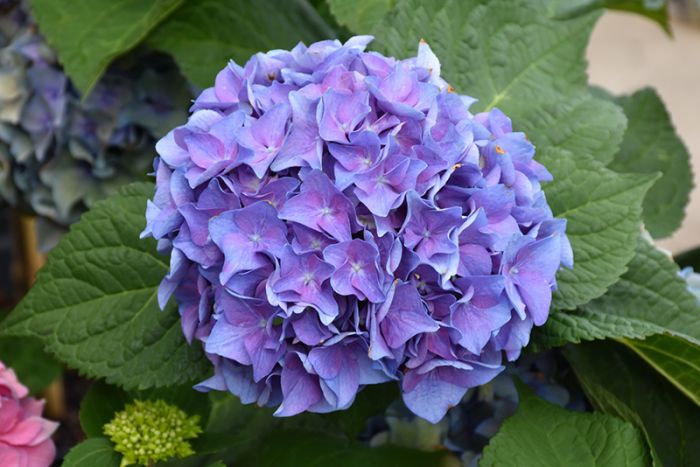Hydrangea, Bigleaf 'Let’s Dance® Blue Jangles'

Out of stock
Sold out for the season- Sun Preference
- Full-Sun, Part-Sun
Description
A very compact, reblooming selection that is a profuse producer of large, full flower heads.
Minnesota's Largest Selection of Shrubs
Elevate your landscaping with Gertens' unmatched variety of shrubs! Selecting the right shrubs for your backyard can enhance its beauty and functionality. Consider factors like sunlight, soil type, and mature size when choosing shrubs. For sunny areas, flowering shrubs like roses or hydrangeas can add color and charm. In shady spots, opt for shrubs like azaleas or hostas. Evergreen shrubs provide year-round interest and privacy, while deciduous shrubs offer seasonal color changes. At Gertens, we offer a wide selection of shrubs to suit every backyard need.
Details
Let's Dance® Blue Jangles® Hydrangea | Hydrangea macrophylla 'SMHMTAU'
Height: 3 feet
Spread: 3 feet
Sunlight: full sun to partial shade
Hardiness Zone: 4b
Other Names: French Hydrangea, Bigleaf Hydrangea
Group/Class: Let's Dance Series
Brand: Proven Winners
Description:
A dwarf compact shrub producing airy lacecap, blue blooms in acidic soil; pink in alkaline; blooms on both old and new wood; ideal for the shrub border or foundation garden; perfect for patio containers; soil pH affects bloom color
Ornamental Features
Let's Dance® Blue Jangles® Hydrangea features bold blue lacecap flowers with pink overtones at the ends of the branches from early summer to early fall. The flowers are excellent for cutting. It has forest green deciduous foliage. The serrated pointy leaves do not develop any appreciable fall color.
Landscape Attributes
Let's Dance® Blue Jangles® Hydrangea is a multi-stemmed deciduous shrub with a more or less rounded form. Its relatively coarse texture can be used to stand it apart from other landscape plants with finer foliage.
This shrub will require occasional maintenance and upkeep, and should only be pruned after flowering to avoid removing any of the current season's flowers. It has no significant negative characteristics.
Let's Dance® Blue Jangles® Hydrangea is recommended for the following landscape applications;
- Accent
- Mass Planting
- Hedges/Screening
- General Garden Use
- Container Planting
Planting & Growing
Let's Dance® Blue Jangles® Hydrangea will grow to be about 3 feet tall at maturity, with a spread of 3 feet. It tends to be a little leggy, with a typical clearance of 1 foot from the ground. It grows at a fast rate, and under ideal conditions can be expected to live for approximately 20 years.
This shrub does best in full sun to partial shade. It requires an evenly moist well-drained soil for optimal growth. It is not particular as to soil type, but has a definite preference for acidic soils. It is highly tolerant of urban pollution and will even thrive in inner city environments, and will benefit from being planted in a relatively sheltered location. Consider applying a thick mulch around the root zone in both summer and winter to conserve soil moisture and protect it in exposed locations or colder microclimates. This is a selected variety of a species not originally from North America.
Let's Dance® Blue Jangles® Hydrangea makes a fine choice for the outdoor landscape, but it is also well-suited for use in outdoor pots and containers. Because of its height, it is often used as a 'thriller' in the 'spiller-thriller-filler' container combination; plant it near the center of the pot, surrounded by smaller plants and those that spill over the edges. It is even sizeable enough that it can be grown alone in a suitable container. Note that when grown in a container, it may not perform exactly as indicated on the tag - this is to be expected. Also note that when growing plants in outdoor containers and baskets, they may require more frequent waterings than they would in the yard or garden. Be aware that in our climate, most plants cannot be expected to survive the winter if left in containers outdoors, and this plant is no exception. Contact our experts for more information on how to protect it over the winter months.
More Information
| Available for Pre-Order | No |
|---|---|
| Sun Preference | Full-Sun, Part-Sun |
| USDA Hardiness Zone | 5, 6, 7, 8, 9 |
| Common Family Name | Hydrangea |


